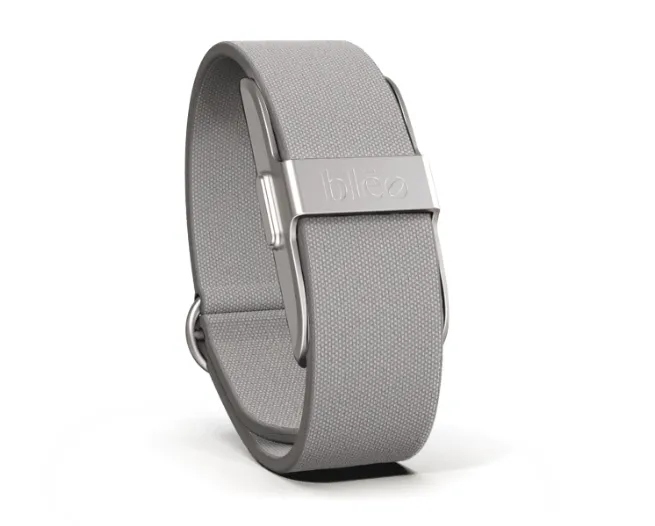Wearable Health Band: Revolutionizing Personal Health Monitoring
In today’s fast-paced world, maintaining personal health has become more critical than ever. With rising health concerns, technological innovations have stepped in to offer solutions that allow individuals to monitor their physical well-being continuously. One of the most prominent advancements in this domain is the wearable health band. These devices have transformed how people approach fitness, wellness, and chronic disease management.
Also Read: Comprehensive Guide to Modern Business IT Solutions
What is a Wearable Health Band?
A wearable health band is a compact, wrist-worn device equipped with sensors that monitor various health metrics. These devices are designed to track physical activity, sleep patterns, heart rate, and other vital signs in real time. Unlike traditional fitness trackers, modern wearable health bands provide comprehensive health insights, integrating with smartphone apps and cloud platforms to store and analyze user data.
Components of a Wearable Health Band
A typical wearable health band includes:
- Sensors: Optical heart rate sensors, accelerometers, gyroscopes, and sometimes electrodermal activity sensors.
- Processor: A microchip that processes the collected data and transmits it to an app or cloud system.
- Display: Some bands include touchscreens or LED indicators to provide instant feedback.
- Battery: Long-lasting lithium-ion batteries that support continuous monitoring.
- Connectivity: Bluetooth or Wi-Fi for syncing data with smartphones or cloud services.
These components work together to provide real-time feedback on a user’s health, making the wearable health band an indispensable companion for personal wellness.
Key Features of Wearable Health Bands
Modern wearable health bands come loaded with features that go far beyond basic step counting. The major functionalities include:
1. Heart Rate Monitoring
Continuous heart rate monitoring helps users track their cardiovascular health. It alerts them to unusual heart rate patterns, potentially preventing serious conditions like arrhythmia or tachycardia.
2. Sleep Tracking
Sleep quality is a vital indicator of overall health. Wearable health bands analyze sleep cycles, including light, deep, and REM stages, helping users understand their rest patterns and improve sleep hygiene.
3. Activity and Fitness Tracking
From counting steps and calories burned to tracking specific exercises like running, swimming, or cycling, wearable health bands provide insights that encourage an active lifestyle.
4. Stress and Mood Monitoring
Some advanced bands can detect stress levels by analyzing heart rate variability and electrodermal activity. This allows users to take timely measures for mental well-being.
5. Blood Oxygen (SpO2) Monitoring
Monitoring blood oxygen levels is crucial for detecting early signs of respiratory issues. Wearable health bands can measure SpO2 levels continuously, providing critical insights for people with chronic lung conditions.
6. Integration with Health Apps
Wearable health bands sync seamlessly with smartphone apps to record historical data, track trends, and provide personalized health recommendations.
Benefits of Using a Wearable Health Band
The popularity of wearable health bands has surged because of the numerous health and lifestyle benefits they provide:
1. Promotes Physical Activity
By setting daily step goals and monitoring calories burned, wearable health bands motivate users to stay active and maintain a healthy lifestyle.
2. Encourages Preventive Healthcare
Continuous monitoring allows users to detect irregularities early, reducing the risk of serious health complications.
3. Enhances Sleep Quality
Detailed sleep tracking helps users understand sleep patterns and identify factors affecting rest, leading to better energy levels and productivity.
4. Supports Chronic Disease Management
For individuals with conditions like diabetes or heart disease, wearable health bands provide real-time data that can be shared with healthcare providers, facilitating informed decision-making.
5. Reduces Stress and Improves Mental Health
With stress tracking and relaxation reminders, wearable health bands encourage mindfulness and meditation, promoting emotional well-being.
Wearable Health Bands vs. Traditional Fitness Trackers
While both wearable health bands and traditional fitness trackers monitor activity levels, there are key differences:
- Data Depth: Wearable health bands offer more comprehensive health monitoring, including heart rate variability, sleep quality, SpO2, and stress levels.
- Integration: Wearable health bands sync seamlessly with medical apps and cloud platforms for advanced analysis.
- Design: Modern health bands are more lightweight, stylish, and suitable for all-day wear compared to bulky fitness trackers.
Choosing the Best Health Tracking Devices
With countless options available in the market, selecting the best health tracking devices can be overwhelming. Here are some essential factors to consider:
1. Accuracy
Accurate sensors for heart rate, SpO2, and sleep tracking are critical. Look for devices with validated technology to ensure reliable readings.
2. Battery Life
Battery longevity varies widely among devices. Some wearable health bands last only a day, while others can operate for weeks without charging.
3. Comfort and Design
Since these devices are worn continuously, comfort is vital. Lightweight, adjustable straps and durable materials make a huge difference.
4. Compatibility
Ensure the device is compatible with your smartphone’s operating system and preferred health apps.
5. Extra Features
Features such as ECG monitoring, guided breathing exercises, waterproof design, and GPS tracking can significantly enhance the device’s utility.
Popular Use Cases of Wearable Health Bands
1. Fitness Enthusiasts
Athletes and fitness enthusiasts use wearable health bands to monitor performance, track progress, and optimize workout routines.
2. Corporate Wellness Programs
Companies integrate wearable health bands into wellness programs to promote employee health and reduce healthcare costs.
3. Elderly Care
Elderly individuals benefit from continuous health monitoring, fall detection, and emergency alerts, enabling independent living.
4. Chronic Disease Management
Patients with heart disease, diabetes, or respiratory conditions can monitor vital signs and share data with healthcare providers for proactive management.
Future of Wearable Health Bands
The future of wearable health bands is promising, with ongoing advancements in sensor technology, artificial intelligence, and bioinformatics. Upcoming devices are expected to monitor blood glucose non-invasively, provide real-time hydration tracking, and even detect early signs of infectious diseases. The integration of AI will make wearable health bands more predictive, offering personalized health insights before symptoms appear.
Conclusion
The wearable health band has evolved from a simple step counter to a sophisticated health monitoring device capable of providing comprehensive insights into personal well-being. By enabling continuous tracking of vital signs, sleep patterns, physical activity, and stress levels, these devices empower users to take control of their health proactively. Choosing the best health tracking devices requires careful consideration of accuracy, battery life, comfort, and additional features.
As technology continues to advance, wearable health bands will play an increasingly central role in preventive healthcare, chronic disease management, and overall wellness, making them an indispensable tool for modern life.







